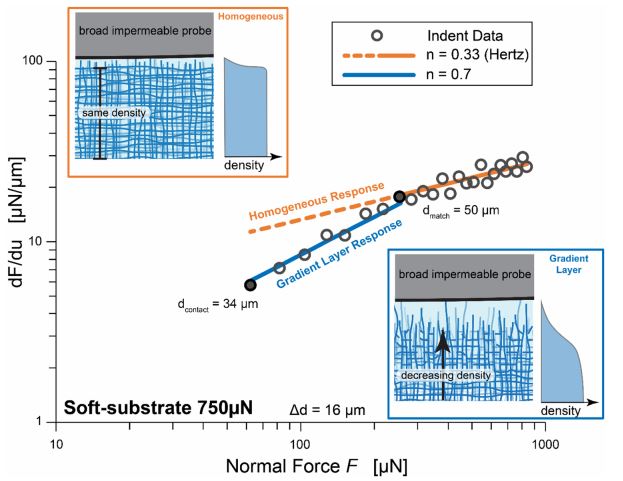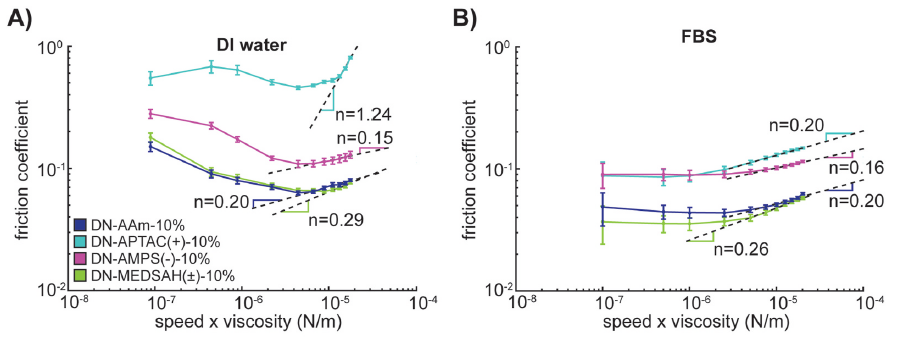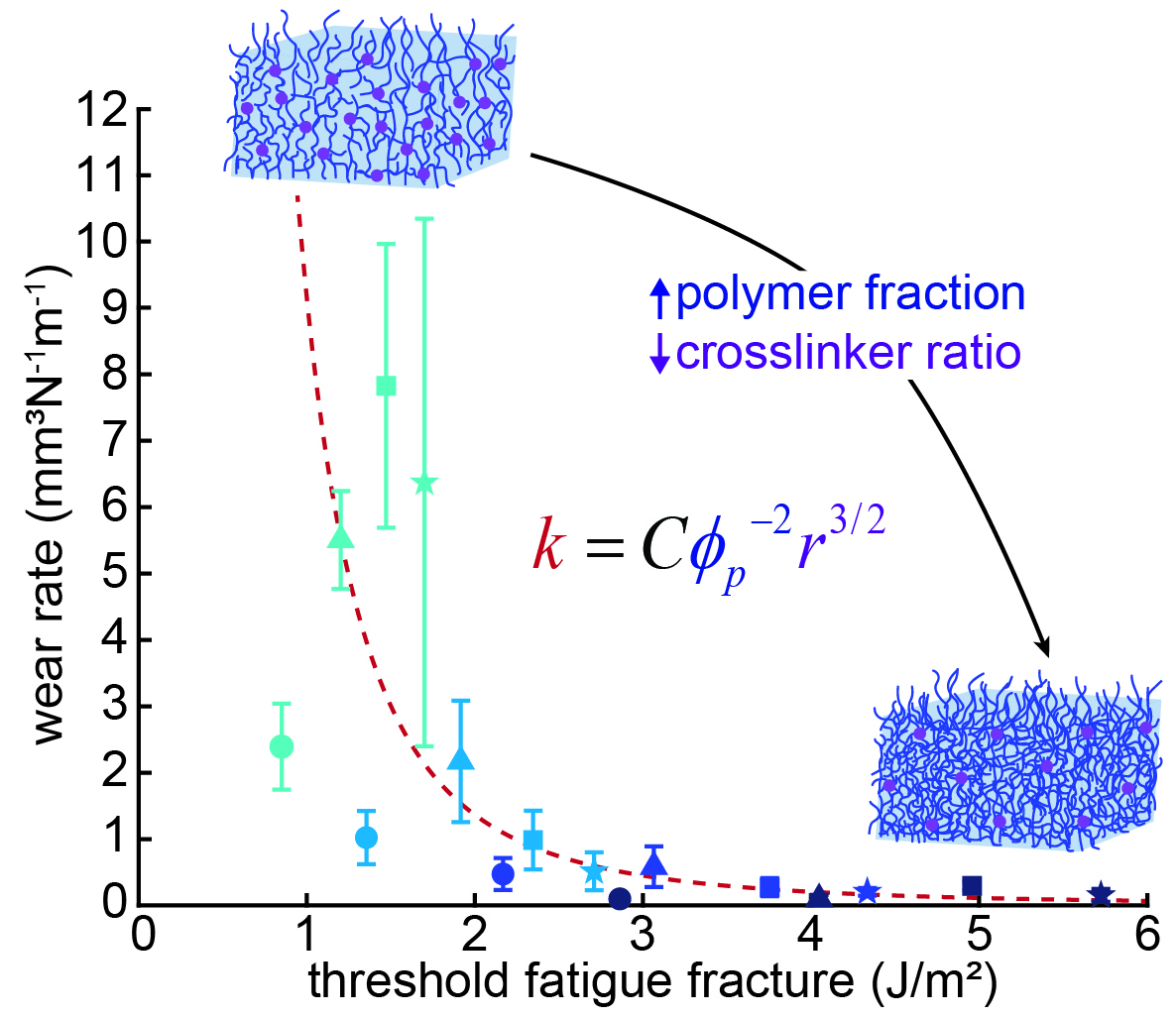Hydrated gels are very slippery, and we now know it’s partly due to their surfaces! Chris made composite hydrogels with a soft surface skin, then fully characterized the effective stiffness of that layer, contact mechanics, and how it contributes to good lubrication (or not!) He did an impressively-large number of experiments involving materials synthesis, careful […]



